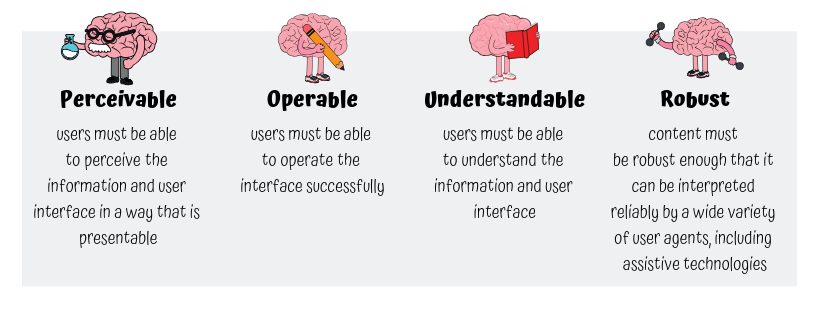The “What”, “Why”, and “How ” of Digital Accessibility for Business
Updated: January 5, 2023
Larry Lewis is the Director of Channel Sales and Strategic Partnerships at The Paciello Group, where he collaborates on a variety of accessibility issues. The company is closely tied to businesses that develop assistive technology tools, giving them firsthand knowledge of the importance of accessibility. As a blind user himself, Lewis understands how essential assistive technology is in order to do his job, run a business, and even shop online. In the webinar, “The “What”, “Why”, and “How” of Digital Accessibility for Business,” Lewis emphasizes the responsibility developers and content creators have to make the digital world more usable and accessible, and how ultimately it benefits all users.
Defining Digital Accessibility
The World Wide Web Consortium created a set of guidelines called WCAG that are undergirded with four standards to make the web more accessible for all users, including those with disabilities. The four standards set in place to meet the WCAG guidelines are:

Understanding Your Disabled Audience
There are millions of people worldwide living with a disability. They may have a sensory disability (blind/low vision or deaf/hard of hearing), a mobility disability, or a learning disability. Some people may even have two or more disabilities. All of these disabilities can affect how a user interacts with your website. It’s crucial to keep these users in mind when creating content. Will they be able to equally enjoy your content like their sighted/hearing counterparts? If not, you definitely want to revisit your accessibility plan.
Assistive Technologies that Empower Users
Many tools are available to help users with disabilities navigate the web.
- Screen reader: reads content and provides keyboard or gesture alternatives for interacting with content
- Screen magnification: provides magnification of content
- Speech recognition: provides speech input alternatives for those with mobility impairments
- Ergonomic keyboards and alternative input devices
Why Accessibility Matters
It’s important to build an accessibility plan early on in the development process so that you don’t have to take steps back. Accessibility presents a minor 3% increase in “level of effort” for design and development. Imagine building out your website and content only to have to go back to redesign with accessibility in mind? Save yourself time and energy by getting it started early in the process. Here’s why accessibility matters:
- It’s a civil right: every person deserves to access the same websites and information. It’s the right thing to do!
- It’s good for your business: if your website is inaccessible, customers won’t be able to access your product/service. You could be excluding potential customers and lose them to a competitor
- It avoids legal consequences: your company could face profound legal implications for failing to make your website accessible. More precedents are being set from enterprise lawsuits.
Tools and Services at Your Disposal
- Keyboard: your keyboard is the easiest accessibility tool you can use to navigate the web
- Color contrast analyzer: color contrast needs to be a 4.5 to 1 ratio
- Accessibility viewer (aViewer): inspection tool used to ascertain how accessible the HTML content is
- Jaws inspect: simplifies accessibility and compatibility testing. Quickly diagnose issues and share them easily across quality control and compliance systems
- ARC: a portal for your program to centralize compliance monitoring
Ultimately, accessibility is merely good coding. When implemented early in the development process, achieving accessibility can be easy to accomplish. Ensuring your digital interface is compliant with accessibility standards may not be an overnight process, however, with the right resources, your organization can find the best ways to achieve digital accessibility.
Watch the full webinar below!
Further Reading

Subscribe to the Blog Digest
Sign up to receive our blog digest and other information on this topic. You can unsubscribe anytime.
By subscribing you agree to our privacy policy.






